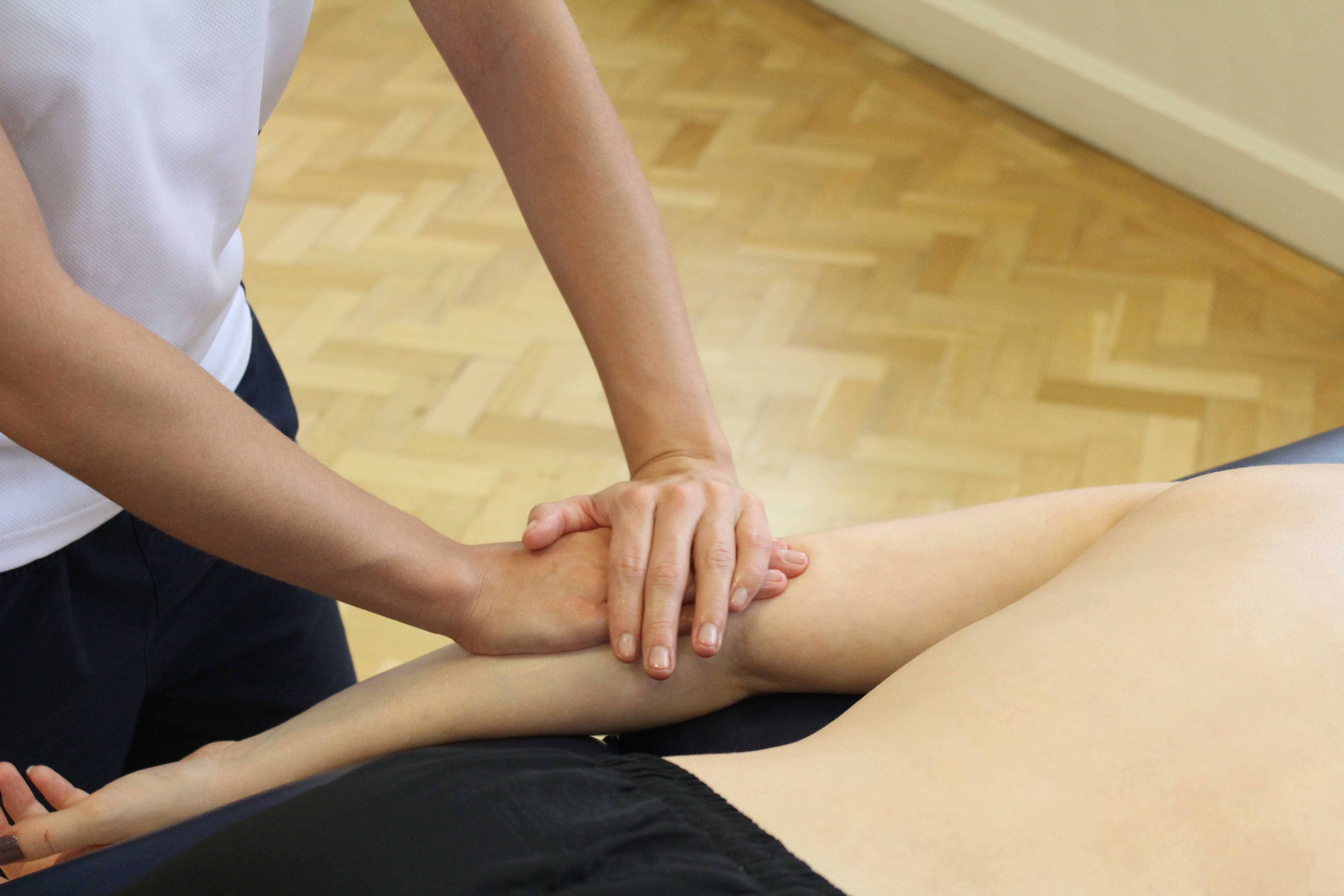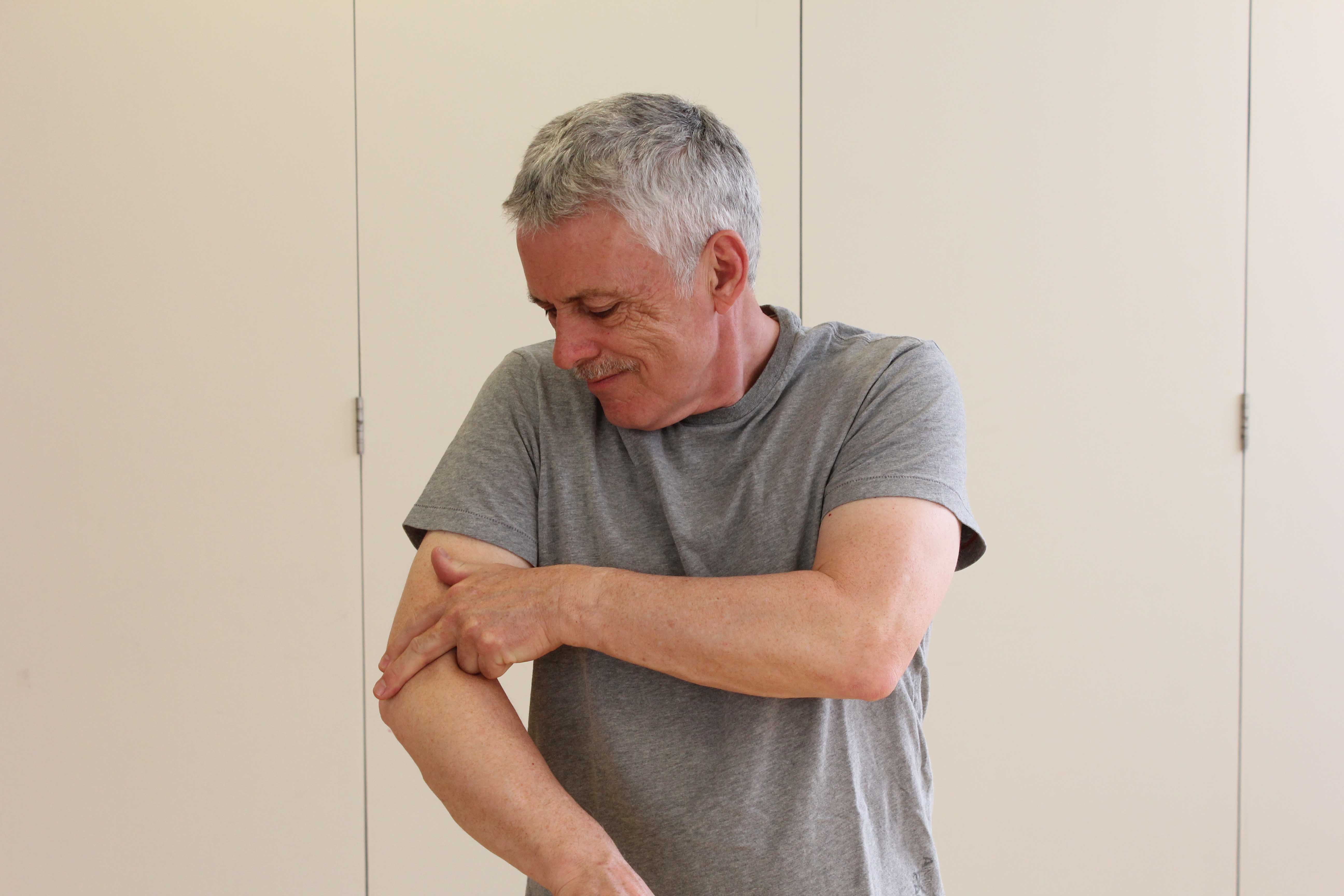What is golfer’s elbow?
Flexor tendinopathy, commonly referred to as ‘golfer’s elbow’ is the degeneration and inflammation within the tendons on the inside of the elbow. These tendons connect the forearm muscles to the inside of the elbow and move the wrist, hand and fingers. Physiotherapy can successfully treat the symptoms of golfer’s elbow.
 Above: Soft tissue and joint mbilisations of the elbow
Above: Soft tissue and joint mbilisations of the elbowHow does golfer’s elbow happen?
Golfer’s elbow is caused by overuse of the tendons on the inside of the forearm. It is a common injury in activities that require a lot of use of the wrist and hand. Repetitive use of the forearm muscles and, therefore, the forearm tendons can cause microscopic tears within the tendons. To repair this damage the body starts an inflammatory response.
What are the symptoms of golfer’s elbow?
In golfer’s elbow, pain is commonly felt along the inside of the elbow and forearm. This pain usually develops gradually. At first it may only be painful following exercise. You may also experience stiffness or tightness in the elbow and forearm region. These initial signs of golfer’s elbow are often ignored as they disappear quickly when the arm is being used or when heat (i.e. a hot shower or hot pack) is applied over the elbow and forearm region. However, golfer’s elbow normally progresses and the pain within the tendon becomes more intense and more frequent until it is present all of the time. Additional symptoms of golfer’s elbow include:
What should I do if I have golfer’s elbow?
Golfer’s elbow does not get better on its own. If the cause is not addressed or you continue to exercise your elbow will not improve and may even worsen. If you have or suspect you have golfer’s elbow, arrange to see your physiotherapist as soon as possible. In the meantime you can begin initial treatment. This should consist of icing following exercise with crushed ice wrapped in a moist towel. Apply the ice for 15–20 minutes over the inside of the elbow / forearm until the skin is numb.
 Above: Golfers elbow is causes by inflammation around the tendon of the elbow and is most commonly caused by overuse of the forearm and wrist.
Above: Golfers elbow is causes by inflammation around the tendon of the elbow and is most commonly caused by overuse of the forearm and wrist.Physiotherapy for golfer’s elbow.
Physiotherapy is important in the treatment of golfer’s elbow. Initially, your physiotherapist will diagnose your problem, establish its severity and determine an appropriate treatment plan. This may involve activity modification, soft tissue treatment such as electrotherapy, massage and stretching, and the progression through a series of specific strengthening exercises. The physiotherapists at Physio.co.uk will also be able to assess and determine why you developed flexor tendinopathy and address this during your recovery to prevent a re-occurrence when you return to exercise or sport. Other physiotherapy options include:
What shouldn’t I do if I have golfer’s elbow?
If you have or suspect that you have golfer’s elbow, you shouldn’t ignore it. Your pain may be reduced whilst you exercise; however, the exercise you are doing may be interfering with the healing process and causing further damage. This can lead to your injury getting worse and your pain increasing. If this occurs, your recovery may be prolonged and it may take a number of weeks or months for you to return to exercise and sport.
Could there be any long-term effects from golfer’s elbow?
Golfer’s elbow does not produce any long-term effects, if it is properly diagnosed and appropriately treated. If not, it can lead to prolonged pain along the inside of the elbow and a prolonged layoff from exercise and sport.
To arrange a physiotherapy appointment call Physio.co.uk on 0330 088 7800 or book online.

 0330 088 7800
0330 088 7800

































